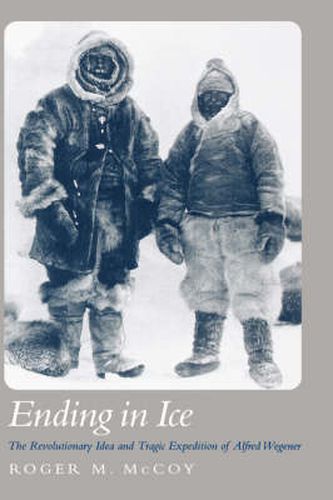Readings Newsletter
Become a Readings Member to make your shopping experience even easier.
Sign in or sign up for free!
You’re not far away from qualifying for FREE standard shipping within Australia
You’ve qualified for FREE standard shipping within Australia
The cart is loading…






An old truism holds that a scientific discovery has three stages: first, people deny it is true; then they deny it is important; finally, they credit the wrong person. Alfred Wegener’s discovery of continental drift went through each stage with unusual drama. In 1915, when he published his theory that the world’s continents had once come together in a single landmass before splitting apart and drifting to their current positions, the world’s geologists denied and scorned it. The scientific establishment’s rejection of continental drift and plate tectonic theory is a story told often and well. Yet, there is an untold side to Wegener’s life: he and his famous father-in-law, Wladimir Koeppen (a climatologist whose classification of climates is still in use), became fascinated with climates of the geologic past. In the early 20th century Wegener made four expeditions to the then-uncharted Greenland icecap to gather data about climate variations (Greenland ice-core sampling continues to this day). Ending in Ice is about Wegener’s explorations of Greenland, blending the science of ice ages and Wegener’s continental drift measurements with the story of Wegener’s fatal expedition trying to bring desperately needed food and fuel to workers at the central Greenland ice station of Eismitte in 1930. Arctic exploration books with tragic endings have become all too common, but this book combines Wegener’s fatal adventures in Greenland with the relevant science–now more important than ever as global climate change becomes movie-worthy ( The Day After Tomorrow ).
$9.00 standard shipping within Australia
FREE standard shipping within Australia for orders over $100.00
Express & International shipping calculated at checkout
An old truism holds that a scientific discovery has three stages: first, people deny it is true; then they deny it is important; finally, they credit the wrong person. Alfred Wegener’s discovery of continental drift went through each stage with unusual drama. In 1915, when he published his theory that the world’s continents had once come together in a single landmass before splitting apart and drifting to their current positions, the world’s geologists denied and scorned it. The scientific establishment’s rejection of continental drift and plate tectonic theory is a story told often and well. Yet, there is an untold side to Wegener’s life: he and his famous father-in-law, Wladimir Koeppen (a climatologist whose classification of climates is still in use), became fascinated with climates of the geologic past. In the early 20th century Wegener made four expeditions to the then-uncharted Greenland icecap to gather data about climate variations (Greenland ice-core sampling continues to this day). Ending in Ice is about Wegener’s explorations of Greenland, blending the science of ice ages and Wegener’s continental drift measurements with the story of Wegener’s fatal expedition trying to bring desperately needed food and fuel to workers at the central Greenland ice station of Eismitte in 1930. Arctic exploration books with tragic endings have become all too common, but this book combines Wegener’s fatal adventures in Greenland with the relevant science–now more important than ever as global climate change becomes movie-worthy ( The Day After Tomorrow ).